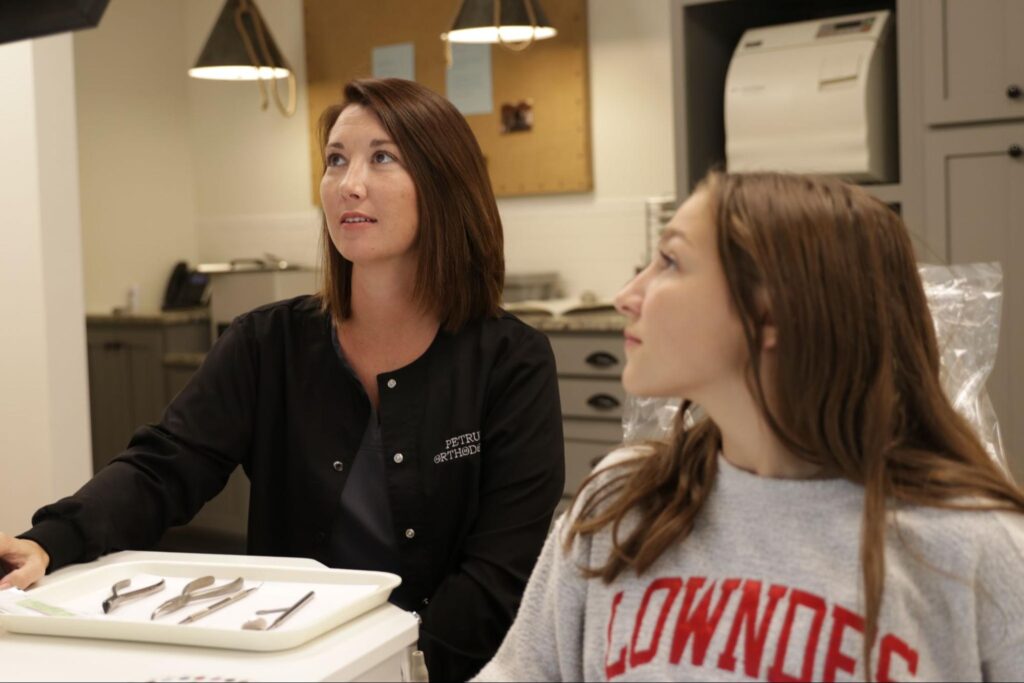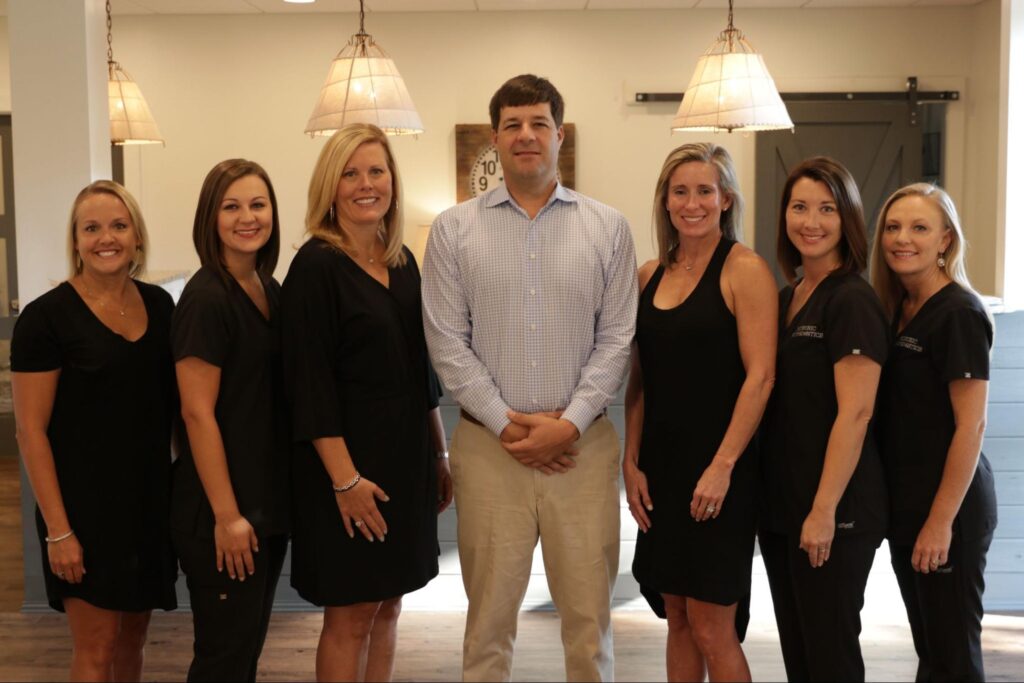When you think of orthodontics, you probably think of teeth first, right? In reality, our field can address and treat issues across oral anatomy—including the jaws and the bite. Petrunic Orthodontics is here to tell you all about how orthodontists like us treat overbites and underbites.
Identifying Overbites & Underbites
In most cases, these conditions are far from voluntary—they’re developmental. There are external forces and underlying conditions that can contribute to them, though. Let’s take a closer look at how these bite issues happen:
- Overbites: An overbite occurs when the upper teeth significantly overlap the lower front teeth when the mouth is closed.
- Functional Challenges: Overbites can make biting and chewing more difficult, and they increase the risk of damage to the front teeth.
- Visible Overlap: The upper teeth extend over the lower teeth, obscuring them from view.
- Facial Appearance: This condition can create a shorter or rounder facial appearance.
- Underbites: An underbite is the opposite of an overbite, where the lower front teeth protrude past the upper front teeth.
- Functional Issues: Chewing and speech can be challenging, and the jaw is often quite sore.
- Jaw Protrusion: The lower jaw can protrude visibly, made especially obvious when a patient is speaking.
- Tooth Wear: With an uneven bite, specific teeth are at greater risk of excessive wear, leading to uneven damage over time.
Treatment Options
Orthodontic treatment can encompass multiple conditions in a broader treatment plan. Dr. Petrunic may devote a certain portion of your plan to correcting a bite issue. This step might come before braces are applied, for example. We have a few options in terms of how to approach an overbite or underbite:
- Braces: Braces are effective for all ages and are particularly beneficial for more severe bite issues. Orthodontic rubber bands are often used to correct specific bite problems, while retainers help maintain the results after treatment.
- Clear Aligners: If a patient has minor to mild bite issues, clear aligners can help restore their bite. That said, it won’t be effective for severe or complex bite misalignment.
- Herbst Appliance: The Herbst appliance is often used for correcting overbites in children. It attaches to the upper and lower molars, guiding jaw growth to improve alignment.
- Palate Expander and Headgear: For underbite correction in children, a palate expander or reverse pull headgear can help widen the upper jaw and align the bite.
- Tooth Reshaping, Extraction, or Surgery: In some cases, teeth may need to be reshaped or extracted to improve bite alignment. If surgery is necessary, our team will guide you every step of the way, ensuring you understand the entire process.
We want to note that when possible, it’s always a good idea to perform this treatment during childhood. This provides kids with a foundation for adolescence and adulthood, and treatment can be less strenuous due to a child’s jaw bones being more adaptable than an adult’s.

Unwise to Wait
When overbites or underbites present themselves in you or your child, we strongly encourage you to schedule a consultation with Dr. Petrunic. These conditions can begin as seemingly insignificant, and then dramatically worsen as time passes. Be aware of these three consequences:
- Jaw Pain and TMJ Disorders: Bite issues can lead to temporomandibular joint (TMJ) pain or dysfunction, particularly when paired with teeth grinding (bruxism).
- Gum Recession or Bone Loss: The most severe overbites can cause lower teeth to press into the roof of the mouth, leading to gum recession or even bone loss.
- Increased Need for Surgery: If left untreated, bite issues may require more invasive procedures, such as corrective jaw surgery. We always want to avoid surgical treatment if we can.
Your Questions Answered
The general public aren’t experts in overbites and underbites, and that’s okay! Teams like ours at Petrunic Orthodontics are here to fill in those gaps and help educate you.
Q: Am I too old for bite correction?
While early intervention is great, there is no real age limit for correcting bite issues. Both children and adults benefit from many types of orthodontic treatment. The best time to address a problem is as soon as it is identified. Don’t feel too bad if you’ve overlooked it for a while.
Q: Are there therapies available to help with bite problems?
Yes, it’s called myofunctional therapy. This involves physical exercises to improve tongue posture, muscle strength, and swallowing habits that can contribute to bite issues. A patient will usually have multiple sessions depending on their progress.
Q: Are bite issues inherited?
Yes, genetics play a significant role in the development of the jaw and teeth, meaning bite problems are hereditary for many patients.

Before & After!
We hope you have a much better idea of what overbites and underbites are, and how we treat them at Petrunic Orthodontics. Just remember that bite problems can lead to nastier consequences if they’re left unhelped—so don’t hesitate to reach out to us in Prattville for a free consultation.

